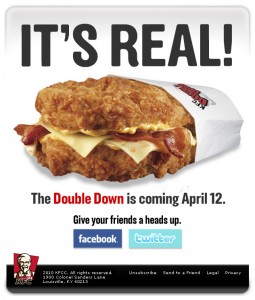How to Craft a Viral Campaign in 3 Steps
In 2012, only half of Americans knew of amyotrophic lateral sclerosis, commonly known as Lou Gehrig’s disease, named after one of its most famous victims. The ALS Association, a nonprofit committed to raise money for research and patient services, raised a combined total of $19.4 million for that year.
Fast forward to today, and the ALS has raised over $100 million this year alone, most of which has been raised in the two month period of July and August.
As many of us know, it’s all due to one viral campaign: the ALS Ice Bucket Challenge. The challenge, in which one records dumping ice water on themselves or donates to the ALS Association, has been shared over 1.2 million times on Facebook and 2.2 million times on Twitter.
The campaign was so successful that critics started to worry about how the challenge would affect counties under severe drought watches.
Why did this campaign, out of all the others floating around on the Internet, go viral?
There’s not a lot we have control over when it comes to the “viralocity” of an image, video or idea. However, according to Malcom Gladwell, there are three elements that increase the probability:
The law of the few (Know who to target)
Malcolm Gladwell states in The Tipping Point, “The success of any kind of social epidemic is heavily dependent on the involvement of people with a particular and rare set of social gifts.”
Gladwell calls these movers and shakers of the internet realm “connectors.” These are people with the extraordinary gift for making friends and acquaintances. They have a multitude of followers on social networks, and when they mention something on Facebook, it is immediately shared 100 times.
These connectors can be people, a website or a news organization. People want to be connectors.
While in today’s society a connector can translate their social network directly into money or political power, most people simply want the rush they feel when their idea or link is liked or retweeted. A good idea in the hands of a few can spread like wild fire.
The stickiness factor (Good content)
The two reasons the ALS Ice Bucket challenge succeeded was because it was for a good cause, and it was easily repeatable. At the end of their individual challenge, the participant then had to challenge three of their friends to replicate them. As the campaign gained momentum, it even grew to include big-name celebrities, such as Oprah, Bill Gates and Steven Spielberg, taking the plunge.
The stickiness factor correlates to your core content, cause or campaign. Is it well thought out? Is it for a good cause? Will it make a difference in someone’s life? More importantly, is it memorable? The more memorable the campaign, the higher the stickiness factor, and the faster it spreads.










